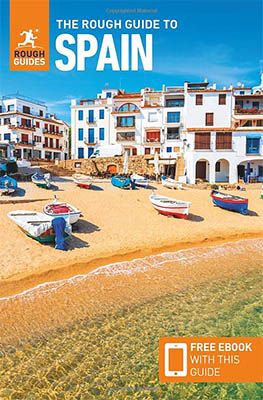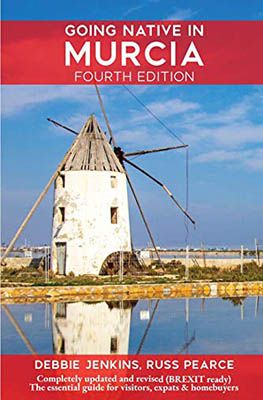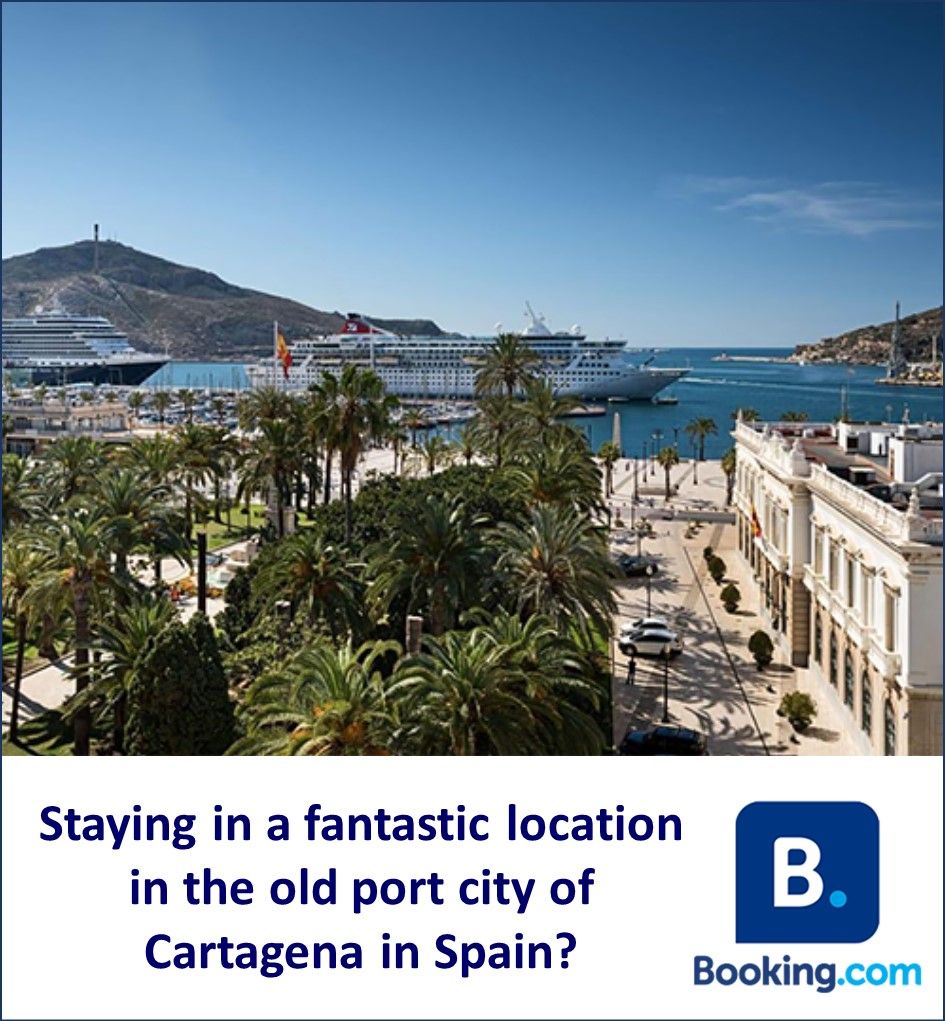In late spring, we took a unique road trip through the Spanish region of Murcia. This small Mediterranean region is home to stunning nature, lovely beaches and many beautiful, historic cities. One such city is Cartagena, located in the heart of the Costa Cálida. The ancient port city has a fascinating, millennia-old history and a vibrant city life. In this blog, we take a city tour of Cartagena’s many attractions. We also give practical tips for a wonderful city break. But we start succinctly with the interesting history of the port city.
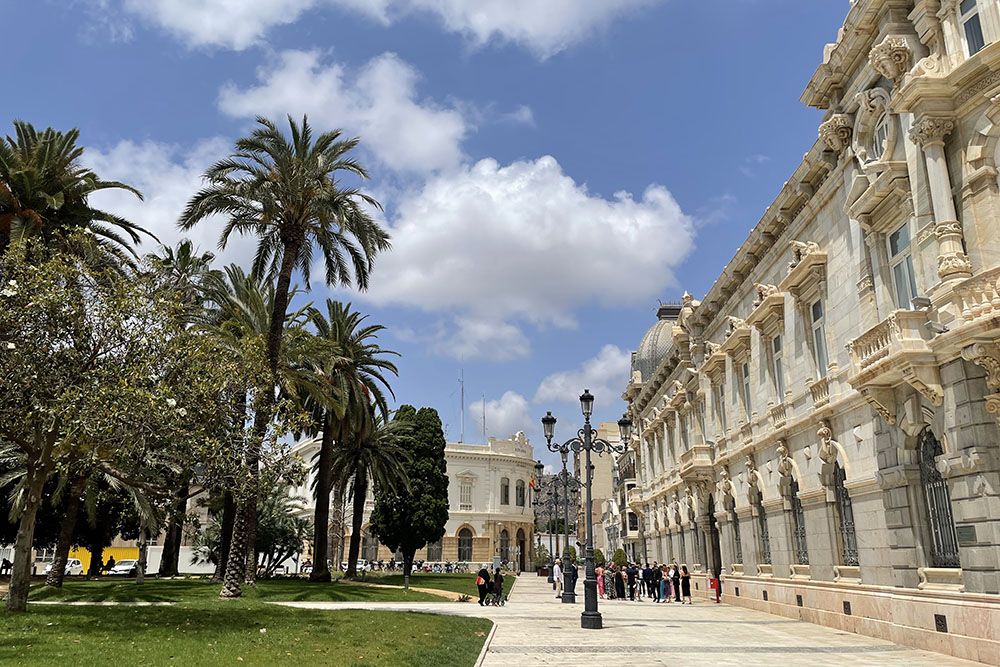
The old port city of Cartagena
Cartagena’s history goes back more than 2,500 years. A settlement emerged with one of the best ports on this part of the Mediterranean. In the third century BC, the settlement was taken by a general from Carthage. That city was an important North African, Phoenician trading city at the time. He called the city “the new Carthage”. Less than 20 years later, the Romans conquered the city. Cartagena remained an important city for the Romans for six centuries. Much has been preserved from this period. Like the Roman theatre where performances are still held today.
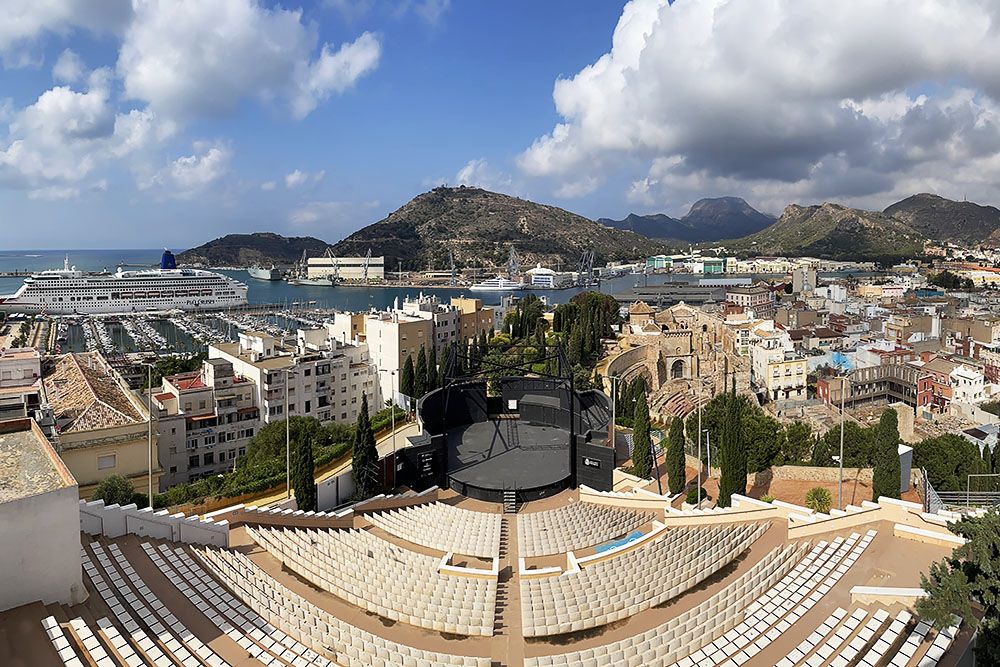
In the centuries that followed, the city first fell into the hands of successively the Vandals, the Visigoths, the Eastern Romans and the Moors. In the Middle Ages, Cartagena was conquered by Alphonse of Castile. He turned it into a bishopric and an important naval port. Impressive city walls also appeared during this period to protect the city from pirates. An imposing castle, the Castillo de la Concepción, also appeared. It is a perfect example of medieval architecture.
In the 18th century, Cartagena fared somewhat less well. But during the Industrial Revolution in the 19th century, the city became an important centre for the iron and steel industry. With increased prosperity, the historic centre gained many beautiful Art Nouveau-style buildings. Unfortunately, the city was heavily bombed during the Spanish Civil War in the 20th century. Several historic buildings were lost in the process. Fortunately, many of those buildings were later restored. The restorations have turned the city into a major tourist destination full of beautiful squares, churches and impressive monuments.
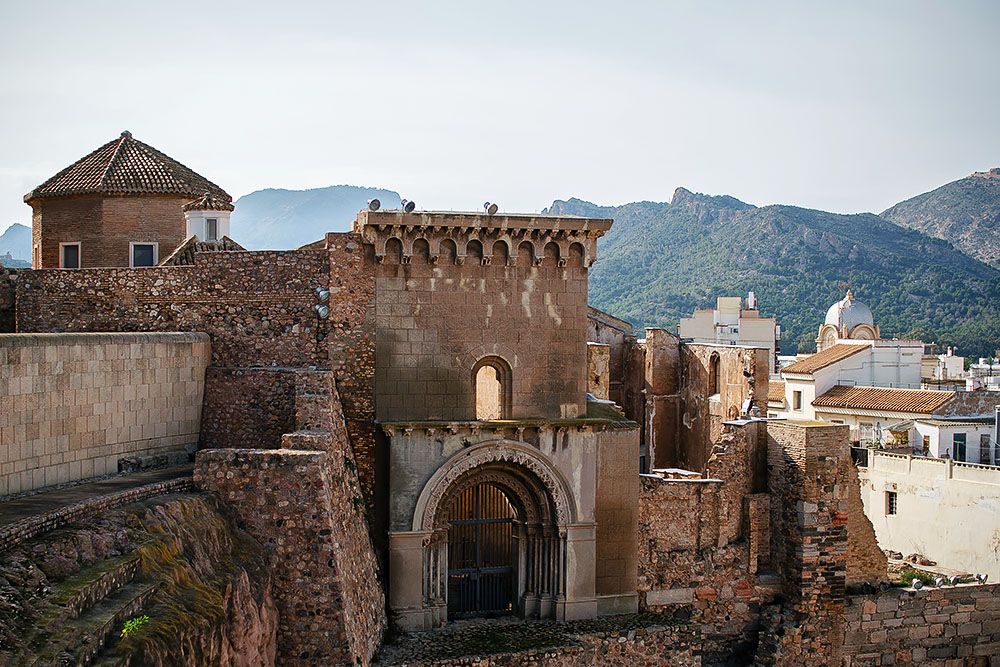
Walking past the highlights of Cartagena
In Cartagena, we took a guided city walk. Very enjoyable because you get to see the main highlights of the city. Besides, you get to know a lot more about the city and its history. That said, you can also have a fun and particularly interesting city walk without a guide. Our journey of discovery begins at the foot of a high, panoramic lift. At flying speed, the lift takes us 45 metres higher to the Parque Torres.
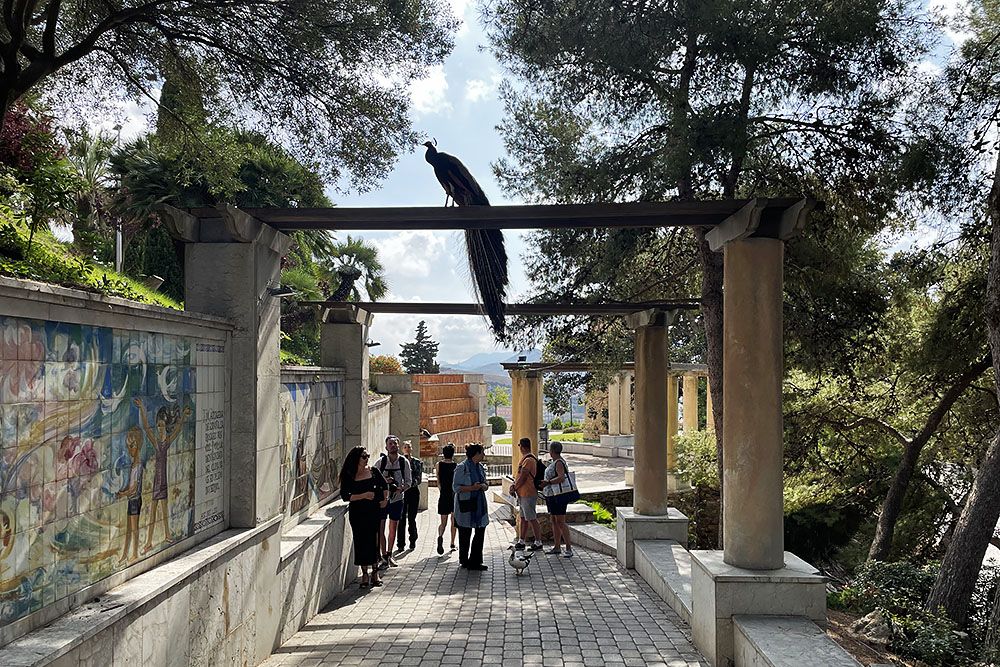
Castillo de la Concepción in the Parque Torres
The Parque Torres (Tower Park) is a pretty, small park on Concepción Hill. There is a peaceful, serene calm when we are there. It used to be different. During the Roman period, this was admittedly still a sacred site. But in Moorish times, an Alcazaba (a fortified palace) was built here because of its strategic location. In the Middle Ages, the structure then gave way to a castle, the Castillo de la Concepción. And during the Spanish Civil War, the San Patricio Battery stood here. Residents of the town were warned of impending bombing by the adjacent siren.
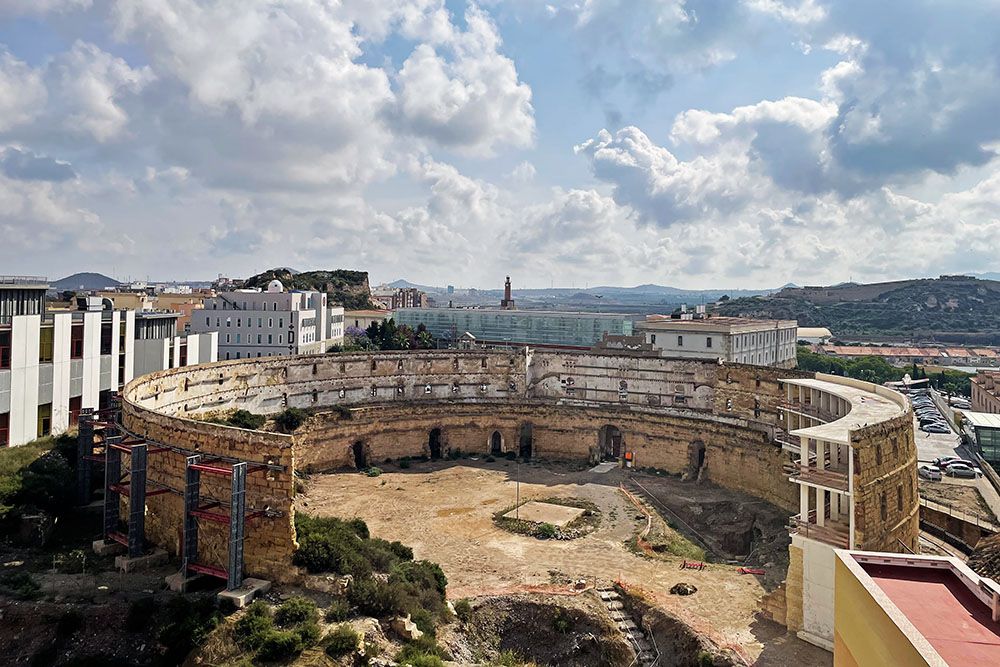
We stroll slaloming around proud, boasting peacocks to a wide viewpoint. Here we have a truly fantastic panorama of the city and the bay. On the far left, for instance, we can see the remains of an amphitheatre, the new arena and the marina. Straight ahead is the old Roman theatre, a park and many old churches. In the distance, we see some more castles on hilltops. We enjoy the view for a while and then turn right towards the medieval castle.
In the 13th century, construction of a large keep began on the site of the old Alcazaba. It reused stones from local Roman ruins and tombstones. The keep grew into the castle of Concepción, which was never actually finished. However, the castle remained the town’s main defensive structure during the 16th and 17th centuries. It was also a depot for gunpowder and a prison. At the end of the 18th century, the castle lost its military importance. It was even largely demolished at the beginning of the 19th century. Nevertheless, a visit to the remaining keep with its museum is still worthwhile!
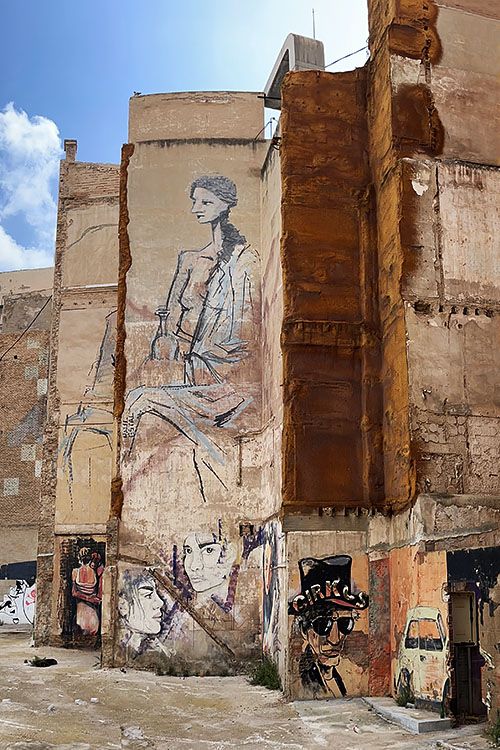
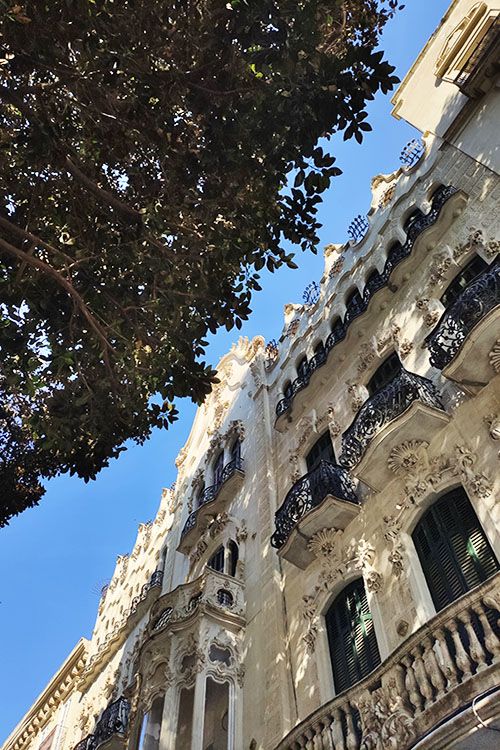
The Roman Quarter
We continue our city walk down the hill and pass a long wall full of large pictures. Our guide tells us that we are now in the old fishing quarter. This district was built on top of the Roman theatre in the 16th century. Only at the end of the last century were the remains of some parts of the Roman city discovered here. Since then, the former fishing quarter has been slowly demolished to expose more of the archaeological site. It is a huge job because here – it turns out – lie the largest and most remains from Roman times in the whole of Spain.
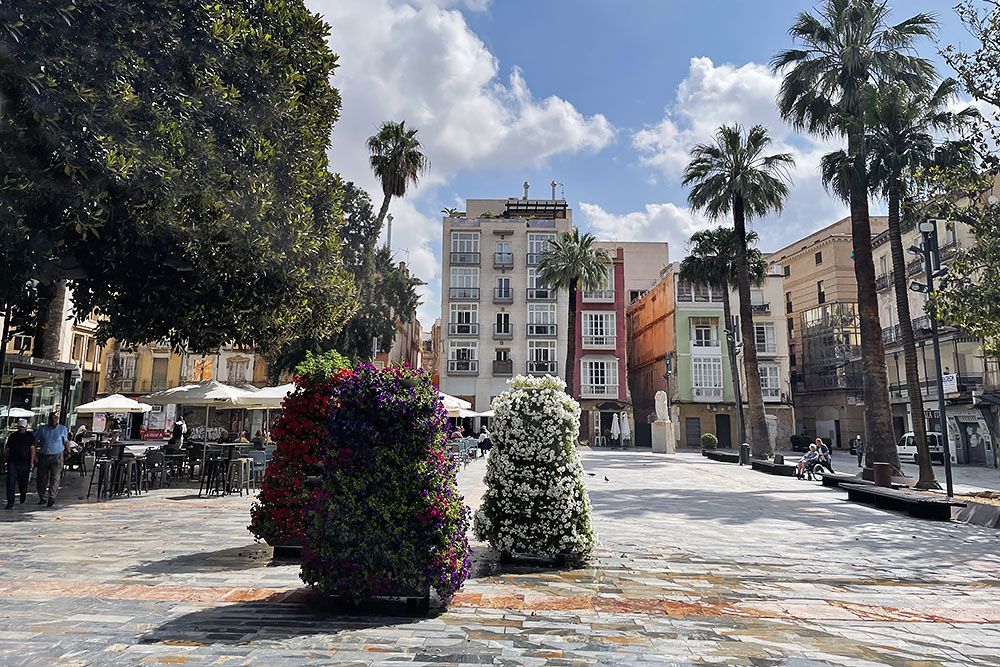
On our way to the traditional and lively Plaza San Francisco, we then dive into the cellars beneath an art gallery. Here are remains of the Domus Porticus: a Roman house that later became the portico to the garden of the Roman theatre. We marvel at the beautifully preserved mosaic floor. Incredible, we think, that this great Roman city was discovered so late. And our amazement only increases when, a little later, we walk past the impressively large Foro Romano. Besides the Forum, here you also have the Sanctuary of Isis, the ancient thermal baths and the Atrium House.
Via Calle de Aire, a pedestrian street full of magnificent modernist buildings, we reach the Roman theatre. Here we enter the imposing museum where we can have a great time for half a day. There is an extraordinary amount to discover both inside and outside about the Roman period in Cartagena. Outside, we also find the remains of an old church at the top of the theatre. This is the ruins of the Catedral de Santa Maria la Mayor. The cathedral, which was built on top of the Roman theatre, was largely destroyed during the Spanish Civil War. Fortunately, some of the facades have been miraculously restored.
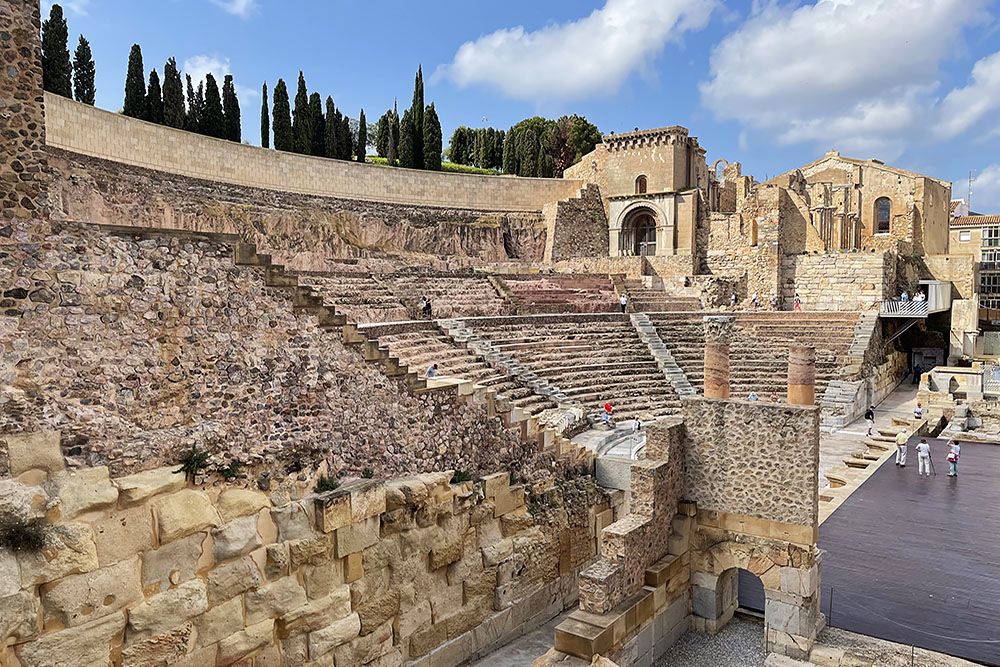
Through Calle Mayor to Cartagena’s (yacht) port
Another highlight in Cartagena is the Calle Mayor. This pretty, blue-tiled pedestrian street is the heart of the city. Here you will find many restaurants, shops and cosy (tapas) bars. It is a great place to experience Cartagena’s lively atmosphere and Spanish culture. We deliberately stroll through it slowly and eventually arrive at the beautiful town hall square, the Plaza Ayuntamiento.
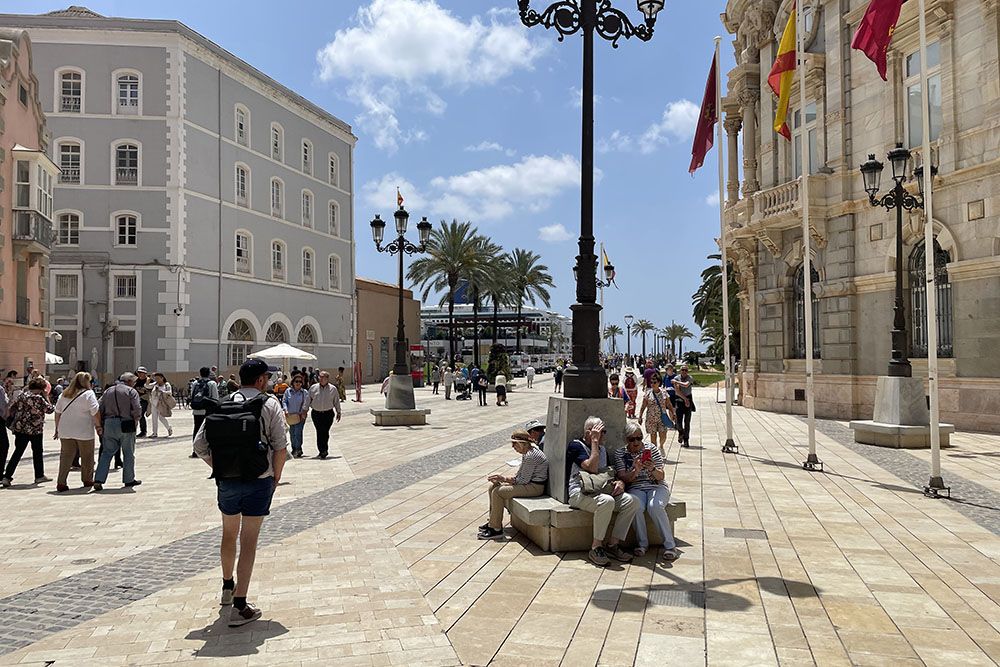
Because of the cruise ship we see in the harbour in the distance, the square is bustling. We pause for a moment at the beautiful city hall. This building, from the early 20th century, is one of Cartagena’s most important modernist-style buildings. Like several buildings on Calle de Aire, the city hall was designed by students of the famous architect Gaudí. You can visit the city hall. And for 1 euro, you can even get a guided tour. In addition, Cartagena’s tourist office is located here.
After exploring the many historical sights, it is time for some relaxation and refreshment. This is excellent at the Port of Cartagena, one of the most important ports in southern Spain. This is the place to enjoy a stroll along the promenade and admire the yachts docked there. And with its many restaurants, it is an ideal setting for a delicious tapas or fish dish.
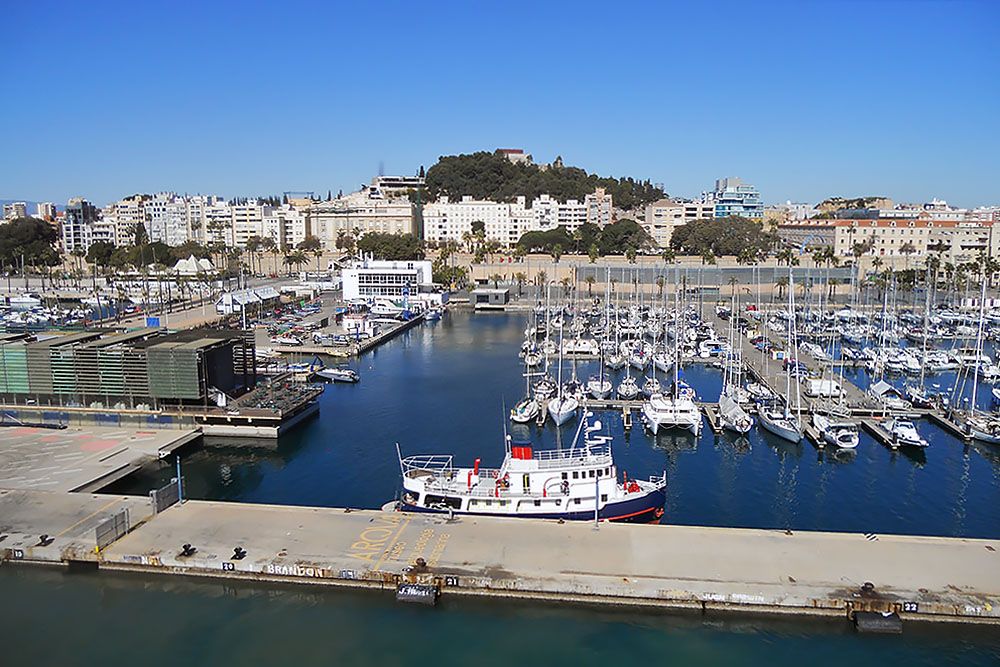
The Naval Museum and the National Museum of Underwater Archaeology
In any case, a city break to the port city of Cartagena is not complete without a visit to the naval museum. This museum highlights the city’s importance as a naval base over the centuries. The museum is located in an old arsenal from the 18th century that until recently was the academy for the Spanish navy. There are many interesting exhibitions on military history, among other things. You will also find an impressive collection of ship models.
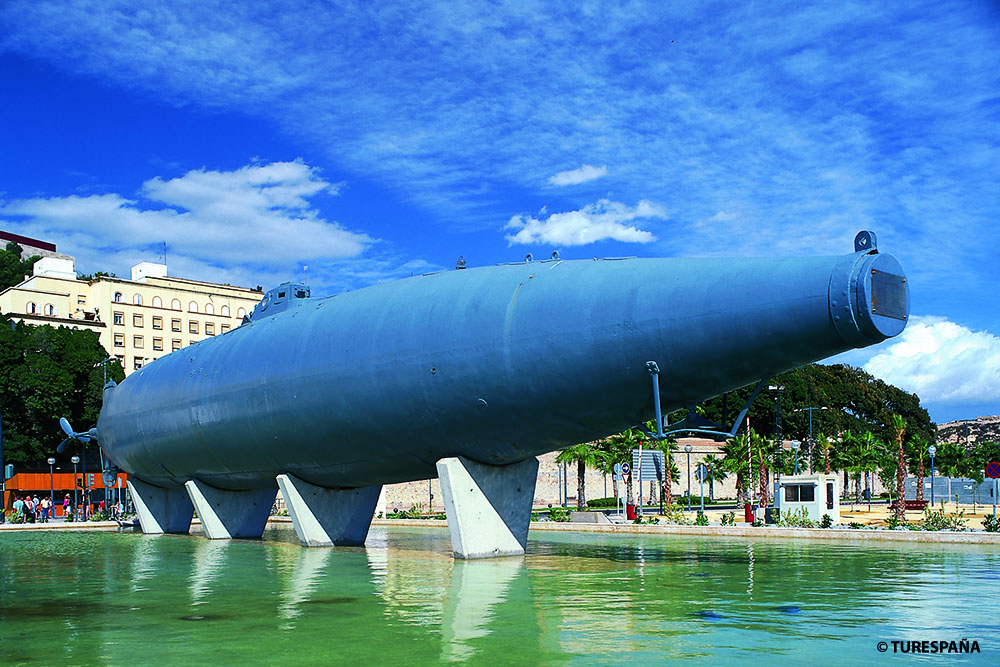
One of the showpieces of the marine museum is the Peral: the first fully electric submarine. The submarine was launched in 1888. She had one torpedo tube (and two torpedoes) and an air regeneration system. Although the submarine was advanced in many ways, the Peral could not recharge the batteries on the move. Its range was therefore very limited. For this reason, the submarine was decommissioned within just two years.
If you walk from the naval museum towards the marina, you will come to a modern-looking museum. This is the National Museum of Underwater Archaeology. Here you will take a journey through the maritime history of this part of the Mediterranean. You will find particularly interesting exhibits on the Phoenician and Roman periods in particular. For instance, you have a life-size model of a Roman merchant ship and an exact replica of a galley.
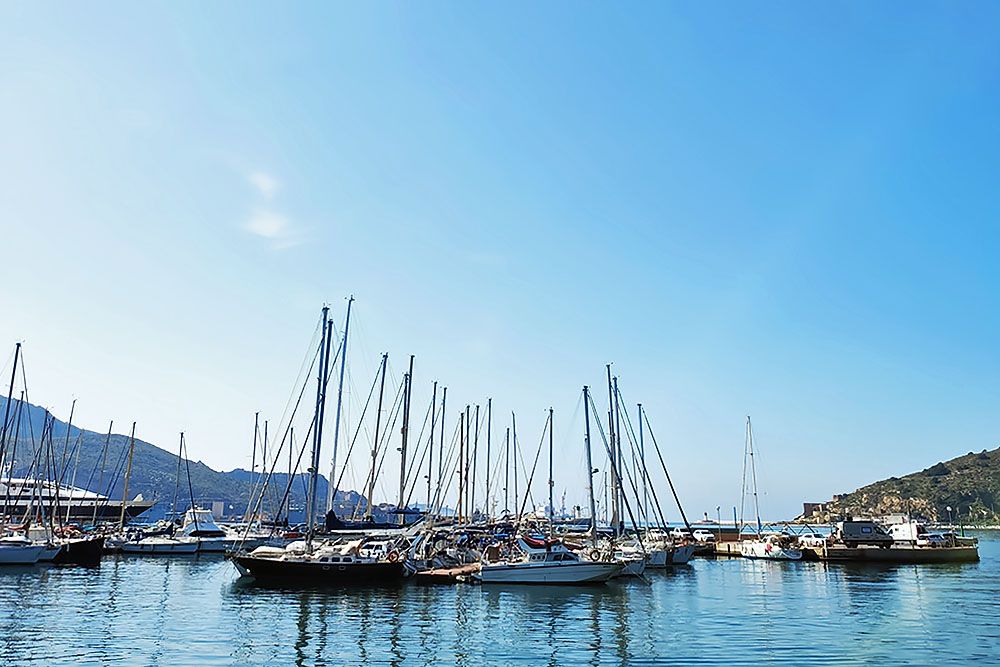
Casa de la Fortuna
Still not tired of Cartagena’s many historical sights? Then Casa de la Fortuna needs to be included in your visit to the city. The Casa de la Fortuna is a beautifully preserved Roman house from the 1st century BC. The house gives a good and realistic impression of how wealthy citizens lived in Roman Cartagena. Stroll through the corridor, bedrooms, dining room and office and admire the beautiful mosaic floors and murals.
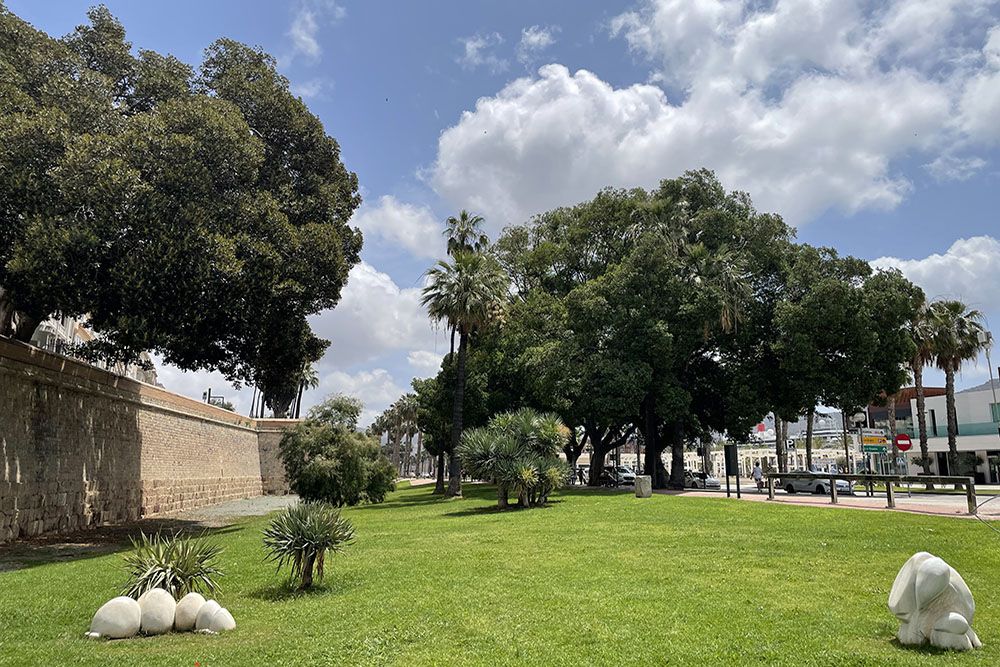
Other highlights of Cartagena
Besides its historical and architectural highlights, Cartagena is also home to several cultural events. One of the most famous is the “Cartagineses y Romanos“. During this festival, historical events are re-enacted. Participants parade costumed through the streets transformed into ancient Roman settlements. It is a colourful and lively spectacle not to be missed if you are here in September. Another cultural event that is fun to experience in Cartagena is Carnival. There are many parades and celebrations.
During your city break, don’t forget to visit some tapas bars. Near the Calle Mayor, you will find plenty of unique and authentic places to enjoy tapas with a great glass of wine. In Cartagena, you even have city walks where you visit various tapas bars with a guide. Too much fun and too delicious to skip!
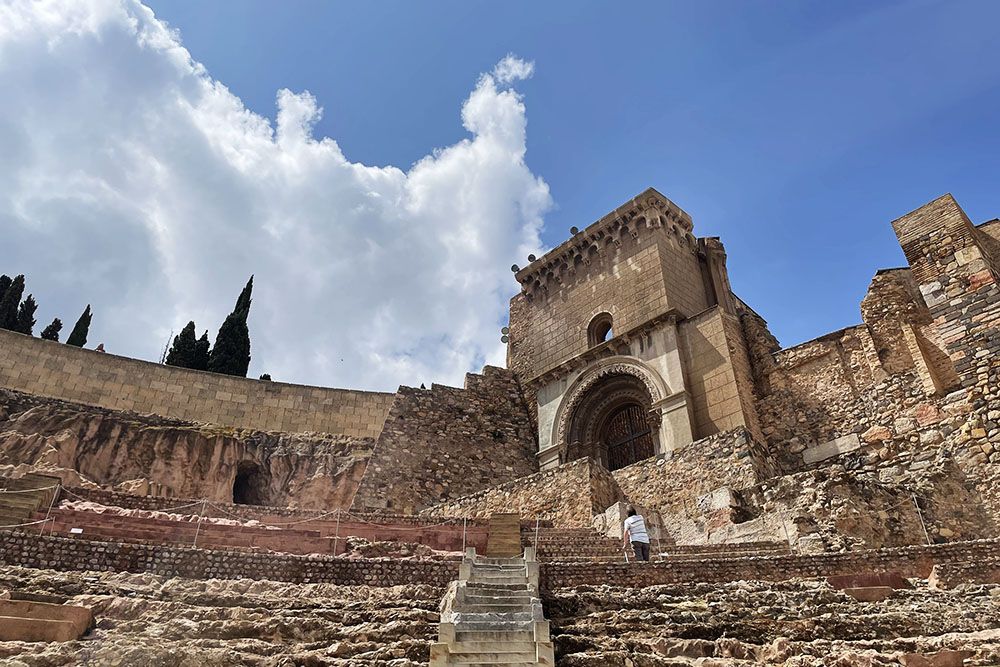
We visited the old port city of Cartagena at the invitation of Instituto de Turismo de la Région de Murcia (ITRIM). We compiled the content of the blog independently and objectively based on our own impressions.
Practical tips for a city break to Cartagena
The ancient port city of Cartagena is located in the southeast of the Murcia region in southeast Spain.
Cartagena is particularly difficult to reach by (international) public transport. As the city has no international airport, the best transport option to visit Cartagena is by car. If you don't have weeks to spare, the best option is to fly non-stop to Alicante. At the airport, you then proceed with a rental car.
Cartagena is good to visit almost all year round. Statistically, most precipitation falls in winter. But even then, with a daytime temperature of 15 to 16 degrees, the city is fine.
The ancient port city of Cartagena has a fascinating, millennia-old history and vibrant city life. The sights are numerous. Here, for instance, you have the Roman theatre, one of the largest remains from the Roman period in the whole of Spain. Another highlight in Cartagena is the Calle Mayor. This street forms the heart of the city and is dotted with restaurants, shops and cosy bars. There is also a particularly interesting naval museum. This museum highlights the city's importance as a naval base throughout history. You also have several castles and several other museums in the city. Add to this the stunning medieval but also modernist architecture, and you have plenty of reasons to visit Cartagena.
Count on at least two days to properly see the main sights and enjoy the vibrant city life. Cartagena cannot be reached very quickly like, say, Barcelona. For this reason, our advice is to visit this city during a week-long tour of the region.
Cartagena has a lot to offer your taste buds. Whether you are looking for traditional Spanish dishes, tapas or international cuisine. The city is home to three restaurants listed in the Michelin Guide. One of them even has a star: restaurante Magoga. But Cartagena is also an excellent place for a delicious meal for less money. Good affordable choices include La Fortaleza, Bar Sol and Alhambra Restaurante Tetería. A little more ambiance and luxury? Then Píkara, La Marquesita and La Alacena de Maria are the places to be. And are you a vegetarian or vegan? Then be sure to visit La Sella.
There is plenty of nice to very good accommodation in Cartagena. Some good choices are:
- Apartamentos Turísticos Walk Street: pleasant flat for quite cheap with affordable parking.
- NH Cartagena: quietly located, neat and affordable hotel. Main attractions are a short walk away. Private parking is available.
- Casa Poeta Pelayo: a slightly more expensive but absolutely beautiful flat. An ideal choice if you are two couples. And perfectly located!

